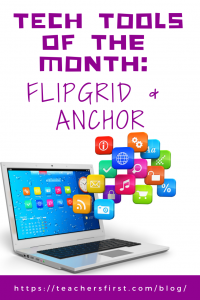 The day after Thanksgiving is more than just a day of shopping. It is also the National Day of Listening. This unofficial holiday began in 2008 by StoryCorps whose mission is to “provide Americans of all beliefs and backgrounds a time to record, preserve, and share the stories of their lives.” This day was chosen because many families are still gathered together for the holiday weekend. What a perfect time to celebrate family and listen to stories of times that have passed. Radio personalities, along with tens of thousands of Americans participate and interview each other every year.
The day after Thanksgiving is more than just a day of shopping. It is also the National Day of Listening. This unofficial holiday began in 2008 by StoryCorps whose mission is to “provide Americans of all beliefs and backgrounds a time to record, preserve, and share the stories of their lives.” This day was chosen because many families are still gathered together for the holiday weekend. What a perfect time to celebrate family and listen to stories of times that have passed. Radio personalities, along with tens of thousands of Americans participate and interview each other every year.
In honor of this unique holiday, this month I am sharing TWO fabulous finds for your classroom related to the skill of listening. There were just too many great tools to pick just one. Anchor is a great tool to use for individual listening activities. FlipGrid is another favorite, for individual or class listening activities. Let’s get started.
Anchor (TeachersFirst review) is a FREE device agnostic tool (meaning there is a web version and also apps for iOs and Android devices). Use this tool to turn your audio into a podcast. Registration is required to create a podcast using Anchor. Once registered, with just one click you can upload your audio from your device or record your voice and create your podcast. You can add songs using Spotify or Apple Music. When finished, give your podcast a name and upload your finished podcast. One of my favorite features of Anchor is that they include unlimited free hosting, so there is no limit on the free podcasts. This is not a “freemium” site. Another neat feature is the ability to podcast with friends. You can use guests or co-hosts from anywhere in the world.
Podcasts are a fabulous tool to use to interview family and friends on the National Day of Listening. Assign students to create podcasts of historical events that family members may remember (where they were on 9/11, their experiences in the military, what technology was like when grandma was growing up, Thanksgiving traditions from generations past, etc.). In the classroom, you could use podcasts to share assignments and instructions when you aren’t there. Use as a listening station for younger grades. Have emergent readers use podcasting to record their reading and listen to the readings. Share the podcasts with parents. Use podcasts in a blended classroom; record the lesson for students to listen at home. Create a weekly class podcast and have students take turns being guest hosts and sharing information and class news. To learn more about Podcasting, see our recent OK2Ask virtual workshop: Engage and Inspire: Podcasting in the Classroom.
The other tech tool of the month for listening is FlipGrid (TeachersFirst review). If you are looking for a tool to use as a class activity for students to participate by listening to something and then sharing what they have heard, this is a fantastic find! FlipGrid recently joined with Microsoft and is also a free tool with unlimited grids. It too is device agnostic and available as an app or on a web browser. FlipGrid allows you to create video responses for quick assessment. Teachers will want to start by creating an Educator Login. Setting up the account is easy with the directions they provide. The teacher must create the original FlipGrid questions. When finished, use the links to share the URL or embed your FlipGrid into a website. Students can respond on any device by clicking the + sign.
Flipgrid is a versatile tool for any age, as no reading is required. On the National Day of Listening, have students interview family members. Students can share what they learned from their families on a class FlipGrid. Maybe you want to have students all ask their families the same questions or offer questions related to a specific topic? Be sure to give a few options for whom to interview, as all families are unique and some students may not have a grandma, uncle, etc.
After listening to a science or social studies lesson, have students answer a question as a quick assessment using FlipGrid. Have students orally explain how they solved a math problem. After a visit from a dentist during Dental Health Month, have students share what they heard and learned from the dentist about dental health. Young readers can also use this tool to listen to their own reading and share their reading with families. Use FlipGrid as a follow-up for a blended (or flipped) learning assignment. Have students explain what they understand or don’t understand about a concept/topic. Use FlipGrid as a formative assessment after listening to a lesson in any subject area. Which of your lessons could you incorporate FlipGrid into?
More resources to explore:
Check out our recently published Features List of listening resources.
We always love to hear from our readers. Do you have a favorite activity to use with Anchor or Flipgrid? Share your favorite activities or tips below.

